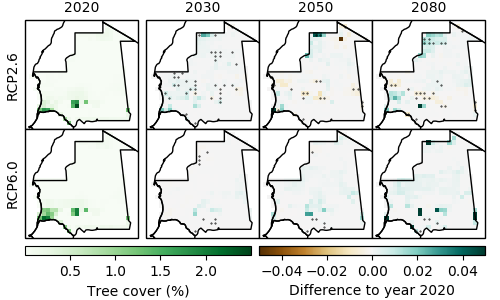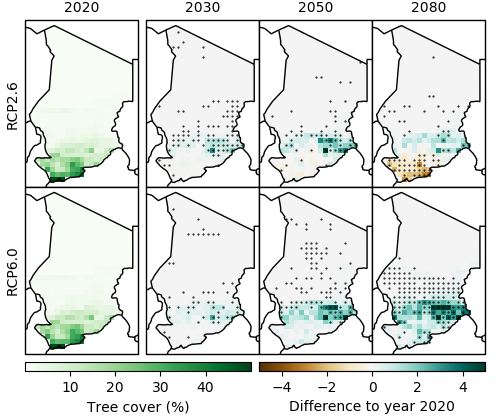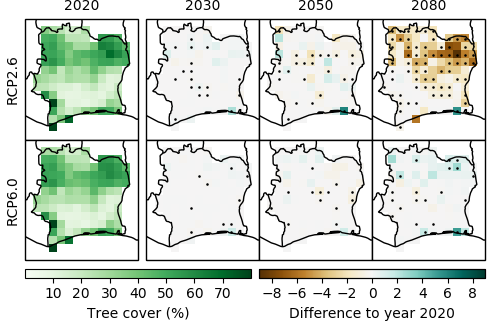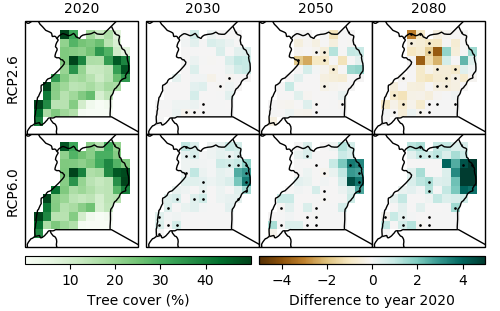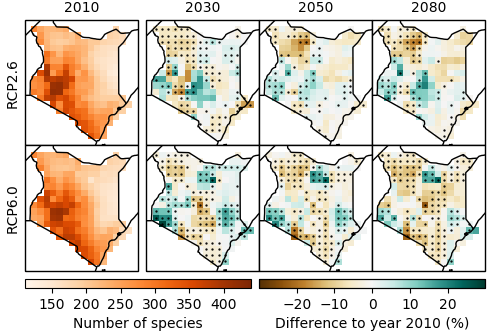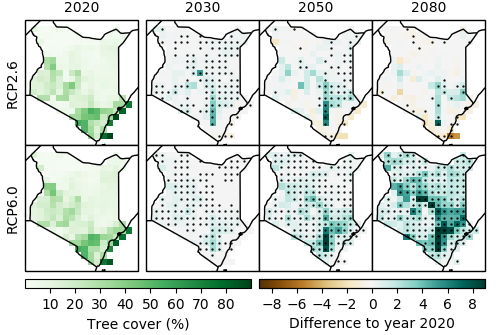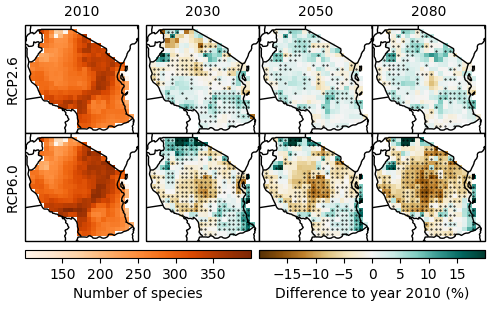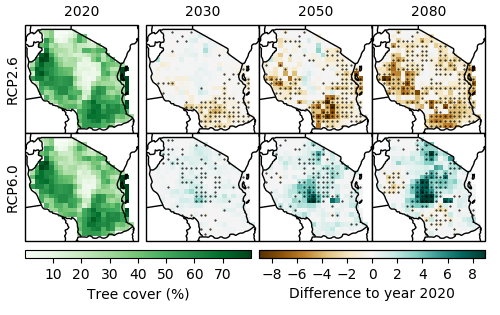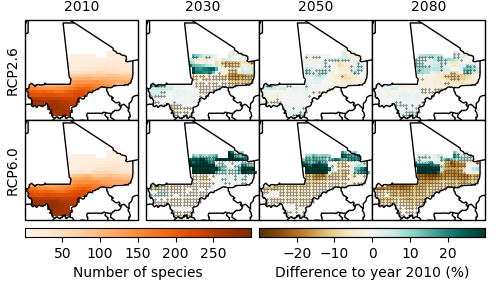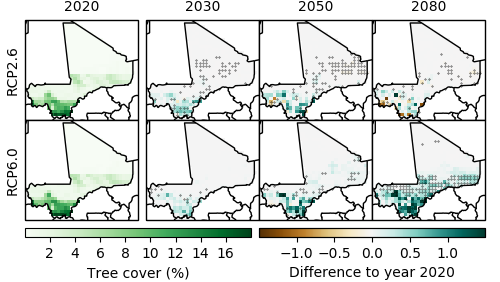Climate change is expected to have a significant influence on the ecology and distribution of tropical ecosystems, though the magnitude, rate and direction of these changes are uncertain [28]. With rising temperatures and increased frequency and intensity of droughts, wetlands and riverine systems are increasingly at risk of being disrupted and altered, with structural changes in plant and animal populations. Increased temperatures and droughts can also impact succession in forest systems while concurrently increasing the risk of invasive species, all of which affect ecosystems. In addition to these climate drivers, low agricultural productivity and population growth might motivate unsustainable agricultural practices resulting in increased deforestation, fires and soil erosion. In turn, soil erosion, along with heavy precipitation and storms, facilitate the occurrence of landslides, threatening human lives, infrastructure and natural resources [29].
Species richness
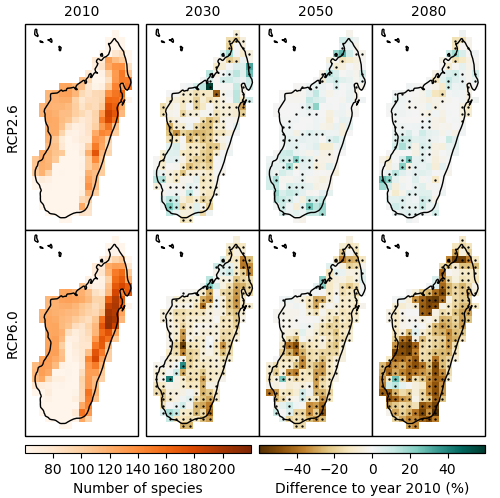
Model projections of species richness (including amphibians, birds and mammals) and tree cover for Madagascar are shown in Figure 16 and 17, respectively. The models applied for this analysis show particularly strong agreement on the development of species richness: Under RCP6.0, species richness is expected to decrease almost all over Madagascar, in some parts by up to 50 % (Figure 16). Under RCP2.6, models are far less certain, projecting slight increases in small patches across Madagascar.
Tree cover

With regard to tree cover, model results are very uncertain and only small changes are projected under both RCPs (Figure 17). Hence, no clear tree cover trends can be identified.
It is important to keep in mind that the model projections exclude any impacts on biodiversity loss from human activities such as land use, which have been responsible for significant losses of global biodiversity in the past, and are expected to remain its main driver in the future [30]. In recent years, Madagascar’s vegetation has experienced profound disturbances due to population pressure and increasing demand for firewood as well as agricultural land, leading to high rates of slash-and-burn activities, which are one of the main drivers behind deforestation [17]. The country has lost 3.89 million ha of tree cover between 2001 and 2019, which is equivalent to a 23 % decrease of national forest area [31].
References
[17] J. Busch et al., “Climate Change and the Cost of Conserving Species in Madagascar,” Conserv. Biol., vol. 26, no. 3, pp. 408–419, 2012, doi: 10.1111/j.1523-1739.2012.01838.x.
[29] V. J. Ramasiarinoro, L. Andrianaivo, and E. Rasolomanana, “Landslides and Associated Mass Movements Events in the Eastern Part of Madagascar: Risk Assessment, Land-Use Planning, Mitigation Measures and Further Strategies,” Madamines, vol. 4, pp. 28–41, 2012.
[30] IPBES, “Report of the Plenary of the Intergovernmental Science-Policy Platform on Biodiversity and Ecosystem Services on the Work of Its Seventh Session,” n.p., 2019.
[31] Global Forest Watch, “Madagascar,” 2019. Online available: www.globalforestwatch.org [Accessed: Sep. 28, 2020].




